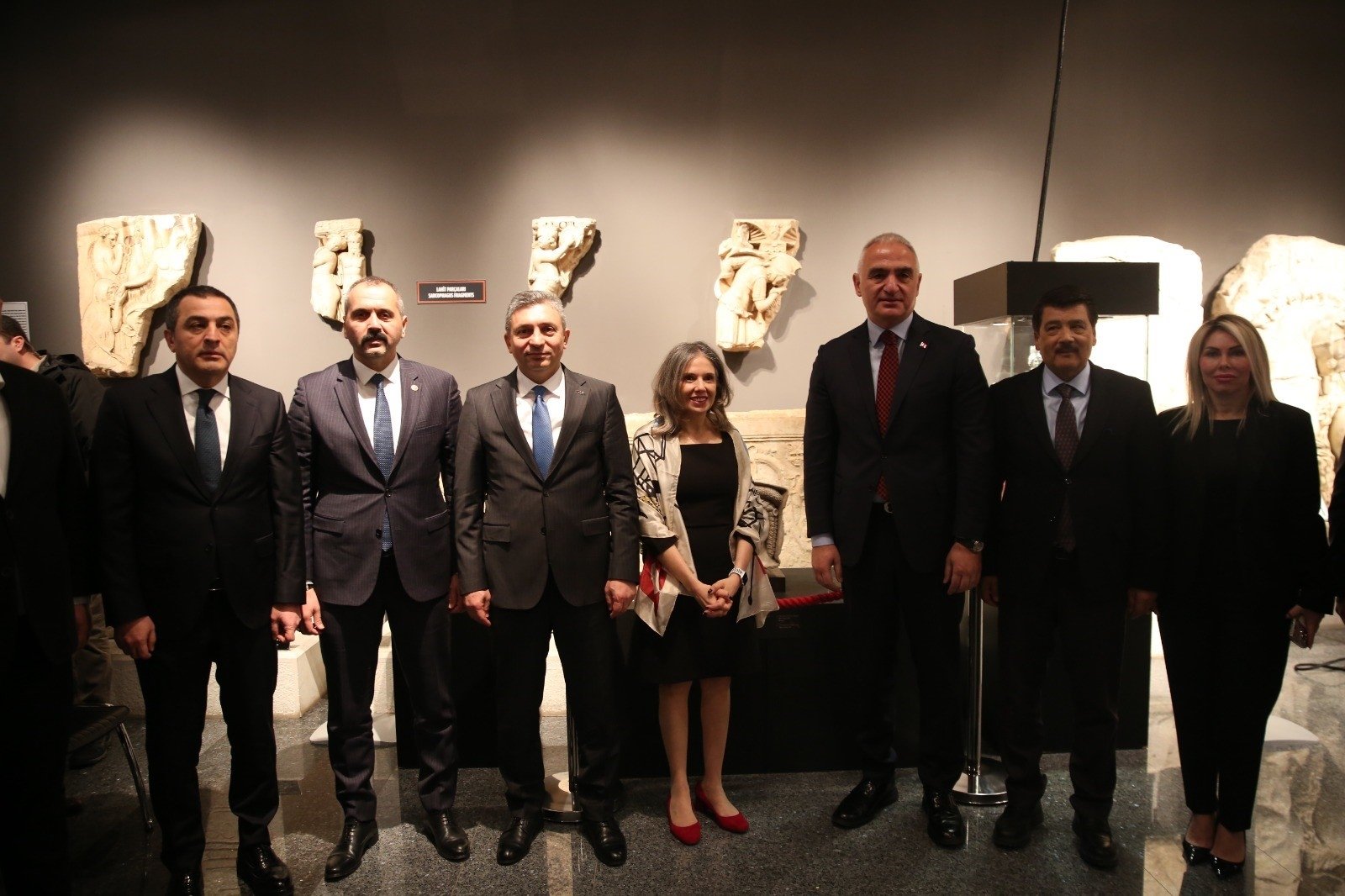Türkiye welcomes $61.9M worth of stolen artifacts from US, UK
The teams fighting the smuggling of cultural artifacts, affiliated with Türkiye’s Directorate General of Cultural Assets and Museums, have successfully brought back 42 more items: one from the U.K. and 41 artifacts that were taken to the U.S. A ceremony was organized at Türkiye’s Antalya Museum with the participation of Culture and Tourism Minister Mehmet Nuri Ersoy and U.S. Consul General in Istanbul Julie A. Eadeh, as the repatriated artifacts were displayed.
The return of 41 historical artifacts to Türkiye from the United States was facilitated by the Ministry of Culture and Tourism. The investigations conducted by the U.S. Manhattan District Attorney’s Office and the U.S. Department of Homeland Security and Intelligence Unit (DHS) also played a significant role in the repatriation of these artifacts.
Among the returned artworks are a monumental bronze statue of an emperor, bronze heads and body parts of life-sized sculptures, figurines, pieces of Phrygian-style helmets and clay vessels. In addition to the 41 artworks returned from the U.S., the successful efforts conducted in collaboration with the Manhattan District Attorney’s Office gained international attention. Notably, a bronze imperial statue from the ancient city of Boubon, purchased by a collector at a 2011 auction organized by Christie’s Auction House and preserved in the U.K., was voluntarily returned to Türkiye by the collector, who became aware of the illegal origin of the artwork.
An exhibition ceremony for the 42 returned pieces was organized at the Antalya Museum.

Speaking at the ceremony, the minister emphasized ongoing efforts to prevent cultural heritage smuggling and the timely return of artworks illegally taken to foreign markets. He highlighted the importance of the 22 Kiliya-type heads among the returned pieces, dating back approximately 7,000 years to the Chalcolithic period. These artifacts not only contribute valuable data for understanding the Chalcolithic period culture in Western Anatolia but also serve as rare examples, with only two intact Kiliya-type heads being returned in 2021 and 2023.
“The Kiliya artifact has influenced contemporary art from 7,000 years ago, inspiring sculptures and paintings by artistic geniuses of the 20th century such as Constantine Brancusi, Amedeo Modigliani and Henry Moore. This is a unique example of understanding the reflections of our cultural heritage on the world art scene. Among the returned pieces are also artifacts such as a clay vase crafted to resemble a wild goat dating back to the seventh and sixth centuries B.C., a Kybele head and female bust from the sixth century B.C., a black-figure vase from the late sixth century B.C., a Minerva bust dating back to the second century C.E., a silver Kybele statue and bronze helmets shaped like Phrygian caps,” he said.
“About 60 years ago, as a result of the looting of the ancient city of Boubon in Türkiye, numerous bronze statues, at least one marble statue and fragments of bronze sculptures were stolen. It is understood that these illegally obtained artifacts were predominantly trafficked to the U.S. through an illegal organization, where they were sold to various museums and collections. I am pleased to note the return of pieces related to the looting incidents in the ancient city of Boubon, which have been under investigation for years. This includes the Emperor Caracalla head exhibited at the New York Metropolitan Museum, the young Caracalla head exhibited at the Fordham Museum, the female head exhibited at the Worcester Museum, the bearded male mask exhibited at the Boston Museum of Fine Arts and other fragments related to Boubon sculptures,” he added.
Eadeh highlighted the collaboration between Türkiye and the U.S. and praised the ongoing partnership facilitated by bilateral agreements. Eadeh emphasized the importance of preserving cultural heritage for future generations and mentioned that the total value of the returned artworks is $61.9 million (TL 1.89 billion).



